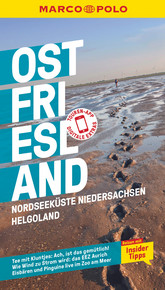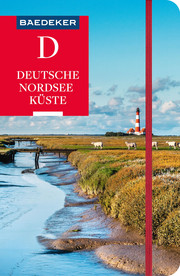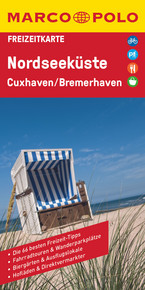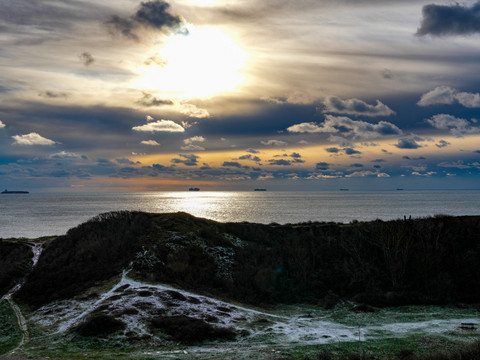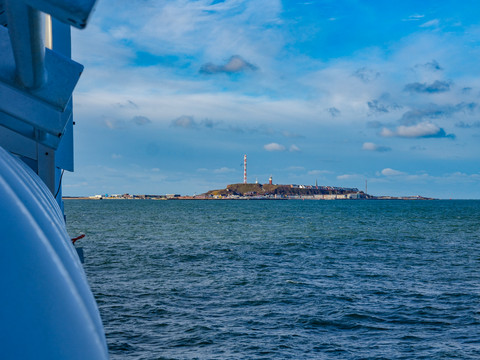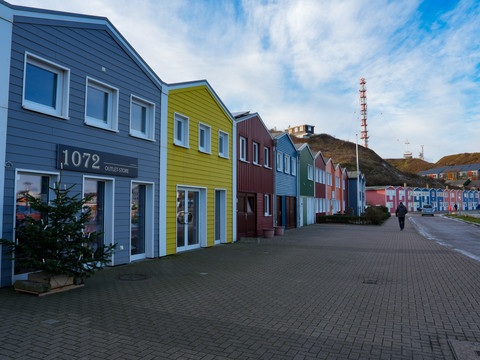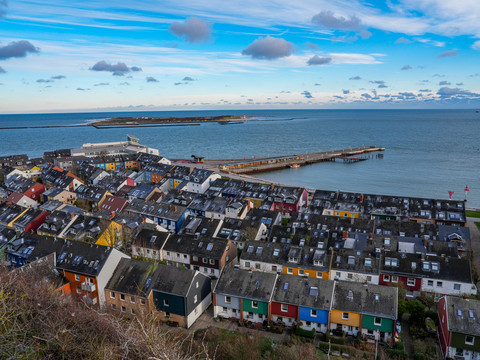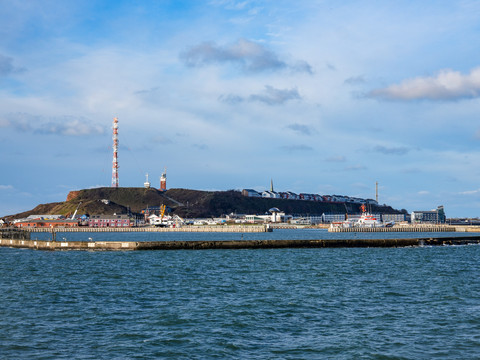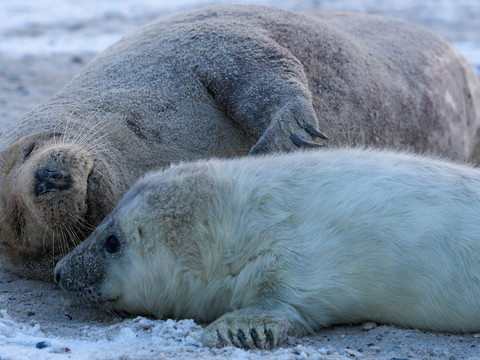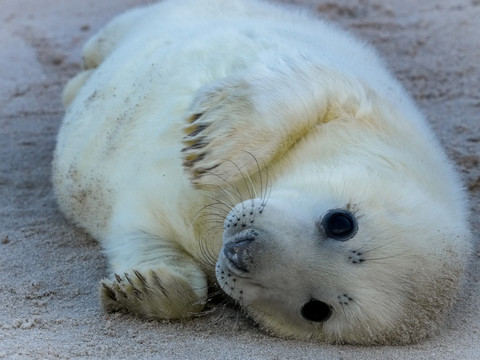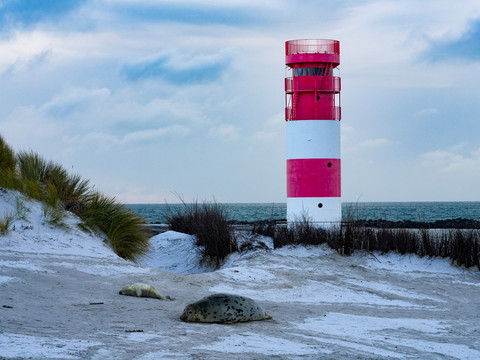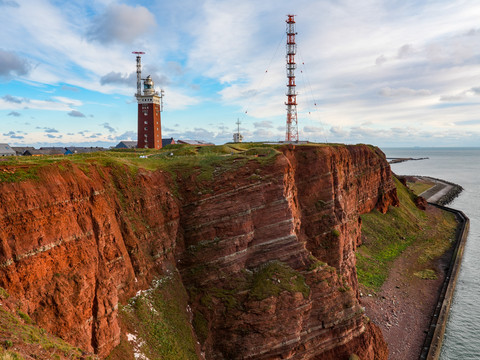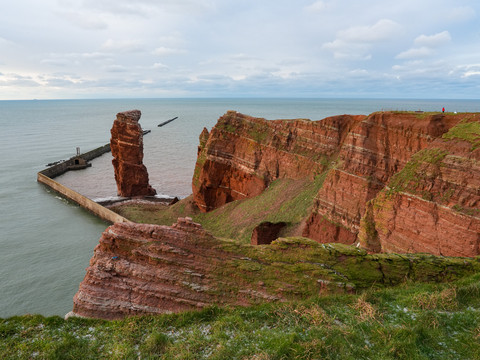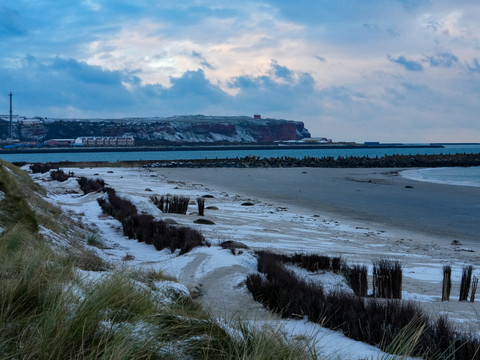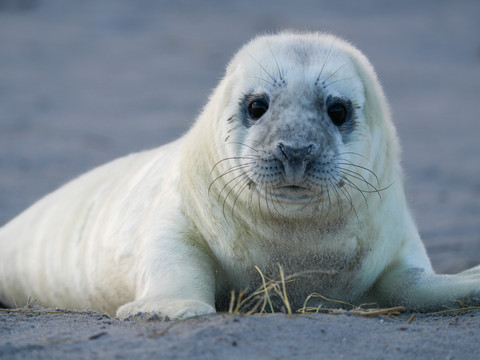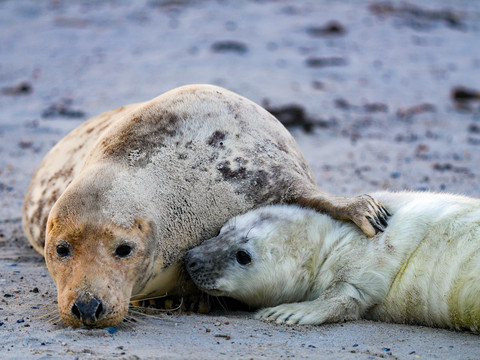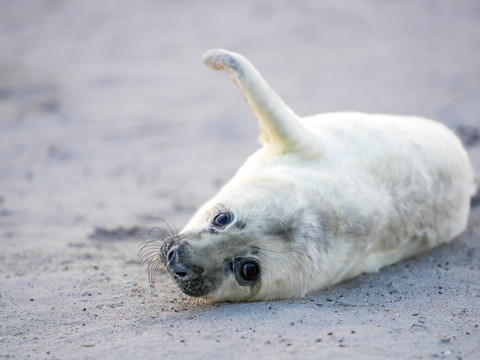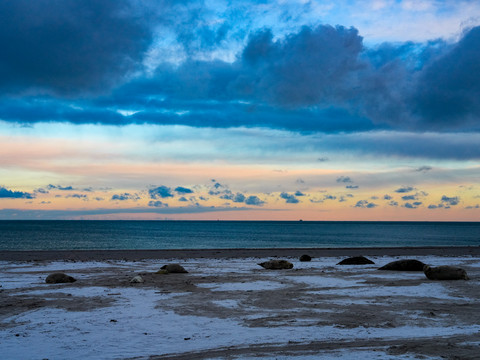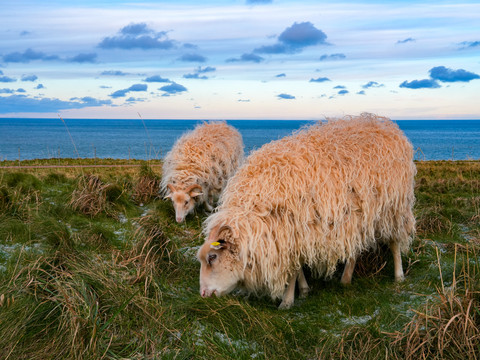From the Lummensprung to the birth of snow-white seal pups to duty-free shopping: Heligoland is unique in many ways. Both in summer and winter. Located about 70 kilometers from the mainland, Germany's only high-sea island rises out of the water with its impressive sandstone cliffs and presents itself with unique nature, mild maritime climate, numerous shops, and dining options. In summer, the small neighboring island of Düne entices for swimming and lounging; in winter, Düne is firmly in the hands of the grey seals, who give birth to their offspring here. A unique spectacle for nature and animal lovers!
The unique location of the tiny island in the middle of the North Sea consists of the fascinating combination of the sandstone cliffs of the main island and the beach and sand island called Düne, just under a kilometer away. Since Heligoland is about 70 kilometers off the coast, the air here is not only particularly clean and low in pollen, but also rich in iodine and oxygen.
Even the journey by train and boat is an experience in itself. Board your cabin in the Nightjet late in the evening in Basel, wake up refreshed the next morning, and disembark fortified with an onboard breakfast in Hamburg-Harburg. 90 minutes later, you already arrive in Cuxhaven and your ship, which takes you to the island. The ferry MS Helgoland, built in 2015 and in service all year round, operates on environmentally friendly LNG gas, features a friendly interior, and makes the 2½-hour journey fly by.
Shortly after arriving at the harbor, as a visitor, you'll pass one of the island's landmarks - the colorful, photogenic lobster huts. Where fishermen once stored their equipment, today a maritime mile with art, bistros, and small exhibitions invites you to stroll and browse. About 1500 people live on the mere one-square-kilometer "Red Rock," which belongs to the state of Schleswig-Holstein. The main island is divided into Unterland and Oberland. Visitors can reach the Oberland either by 184 steps on foot or comfortably by elevator. Houses are densely packed both in the Unterland and Oberland, forming their own overall artwork. Nowhere else in Germany is the architecture of the 1950s and 60s seen in such compactness. Heligoland's history is dramatic - during World War II, the island was bombed by the British; in 1947, they blew up a large part of the island to destroy military installations. The island museum, located just behind the seawater swimming pool, informs through pictures and objects about these events. For those interested in more island history, it's possible to follow the marked history trail - one of several themed trails on the island - leading to 16 stations with information boards and QR codes. Free brochures about the trails are available at the Tourist Information Office. Additionally, Heligoland-Touristik offers various guided tours, such as a nature tour on Heligoland Island or into the underground bunker system.
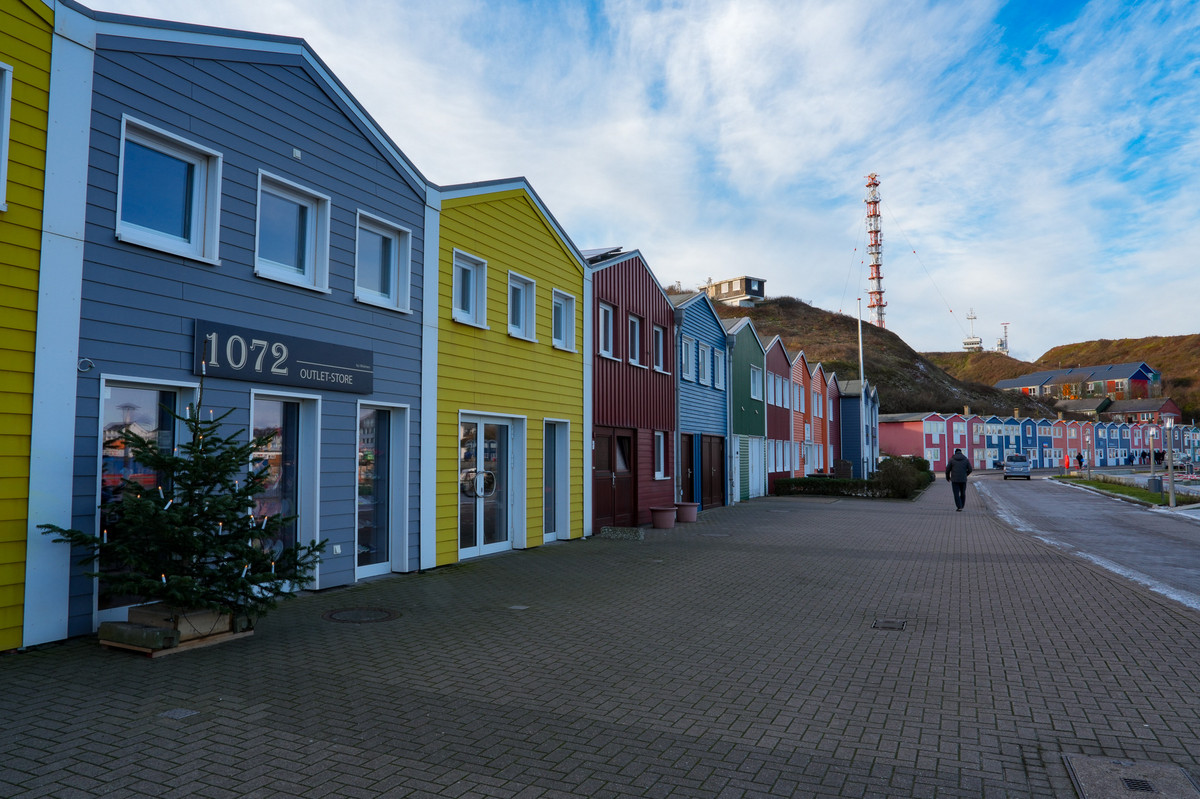
The many different shops invite you to stroll and shop duty-free. Thirst and hunger can be satisfied at every corner on Heligoland; there are numerous restaurants with different culinary offerings, where fresh sea fish and lobster can be found on almost every menu. The island specialty should not be missed during any visit: cooked Heligoland Knieper crab claws. The crab claws are a delicacy that visitors should definitely try. By the way, the Aquarium Restaurant serves particularly delicious meals.
Due to the magnificent view, a walk on the nearly 3-kilometer-long Cliff Path is a must and also passes by Heligoland's most famous landmark - the "Lange Anna" - a narrow red sandstone block. On the Cliff Path, you also get the best impression of Heligoland as you circumnavigate the Oberland once. In summer, Guillemots nest in the rock ledges, providing a special natural spectacle every year.
During the so-called "Lummensprung", the few-week-old Guillemot chicks leave their nests and jump from the red cliffs up to 40 meters high in early summer. The birds are still unable to fly at this age and land in the waves of the North Sea or on the rocky shore. The parent birds feed their offspring at sea. Employees of the Jordsand association answer questions and provide binoculars. In addition to Guillemots, bird enthusiasts can also observe Black-legged Kittiwakes, Northern Fulmars, and Northern Gannets at Heligoland.
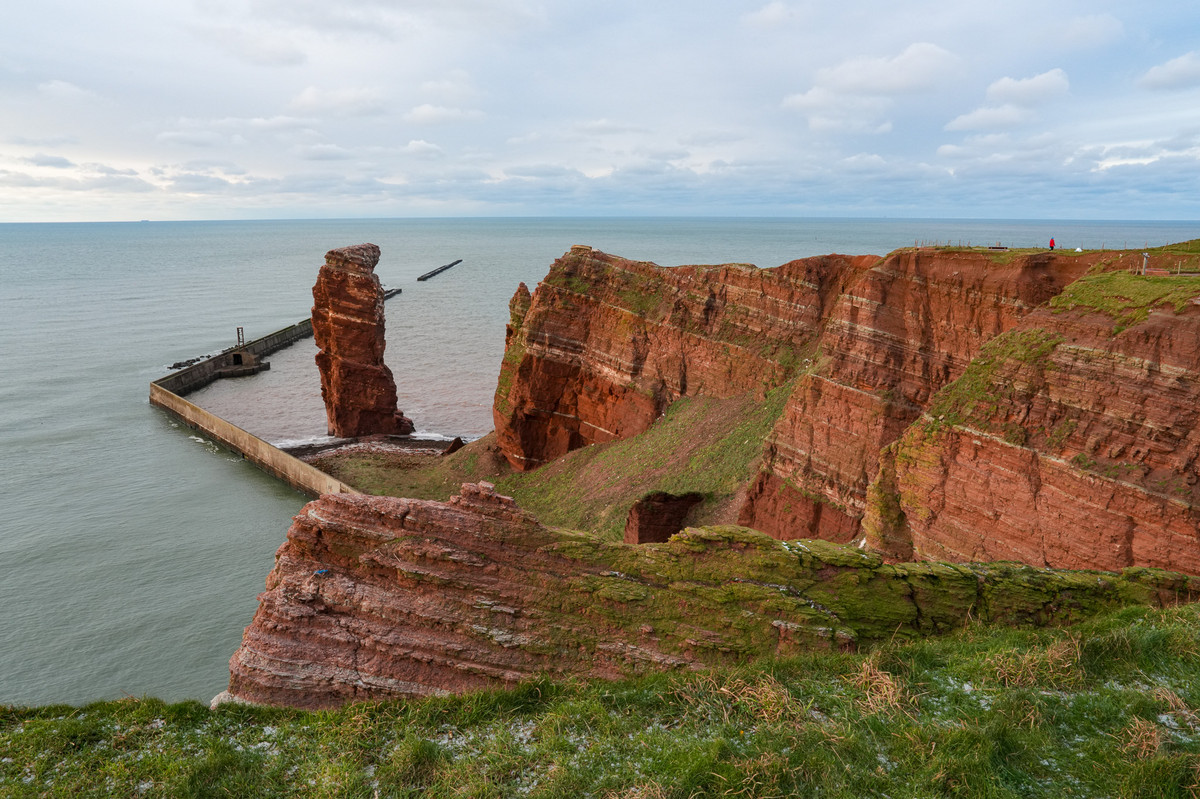
Another special feature of Heligoland are the solid oak Börteboote. For 200 years, these open boats have been transporting tourists from the anchored passenger ships the last few meters to the island. However, more and more ships are now docking directly at the harbor. In 2018, the Börteboote were included in the UNESCO's national register of intangible cultural heritage. They are also used by Heligoland fishermen for lobster and Knieper crab fishing, as well as for tourist excursions.
Additionally, the island is a shopper's paradise; a duty-free zone exempt from VAT. Whether it's alcohol, perfume items, fashion, watches, or jewelry - the offering of discounted items is extensive. Especially in summer, duty-free shopping attracts numerous day-trippers from the mainland. Those who wish to enjoy the island in peace should plan for at least one overnight stay. Or come in winter!
During the autumn and winter months, Heligoland becomes quieter. You can feel and hear it. The sonorous rattling of rolling suitcases is only occasionally heard, no bathers bask on the beaches of the neighboring island Düne, but there are all the more grey seals giving birth to their adorable offspring. The passenger ships sail less frequently, the restaurants are no longer fully occupied. The high-sea island now shows a whole new charm, hidden during the summer months. Without distraction or program, the senses are sharpened for nature. For the sound of the sea. The clarity of the air. And the call of the grey seals.
Once considered extinct in northern Germany, now between 6000 and 7000 grey seals live solely on Heligoland. Grey seals are the second seal species found on German coasts, but much rarer. In the 1980s, they were hardly found in the German Bight. In the mid-1990s, the grey seals returned to Heligoland and give birth to their offspring on the beaches of Düne between November and January. Visitors can approach the seals weighing up to 330 kg on a wooden plank path and on beach sections to just a few meters away to watch hundreds of young seals that delight both visitors and photographers alike. In the first weeks, they wear a fluffy white fur, called lanugo, which protects them from the cold. Seal pups weigh between 10 and 15 kilograms at birth - and quickly gain weight: they gorge on one to two kilograms of food per day, so that they quickly acquire a thick layer of fat to keep warm. It is only after a few weeks, when they have shed their fur, that the young follow their parents into the water - the white baby fur is unsuitable for swimming as it would soak up water. To avoid disturbing them, visitors should keep a distance and behave calmly and discreetly. Nature conservationists from the Jordsand association and a fence ensure that this distance is maintained.
In inclement weather, you can learn a lot about the island at the Heligoland Museum: whether it's about marine and bird research, beach resort service, fishing and geology of the red rock, the adorable grey seals, or James Krüss. The famous children's book author, who wrote the story of "Timm Thaler" among others, was born on Heligoland and spent his childhood and youth here. Or you can visit the seawater swimming pool "Mare frisicum" with sauna and wellness facilities, and then enjoy a coffee at the "KaffeeKlatsch" with a shot of rum.
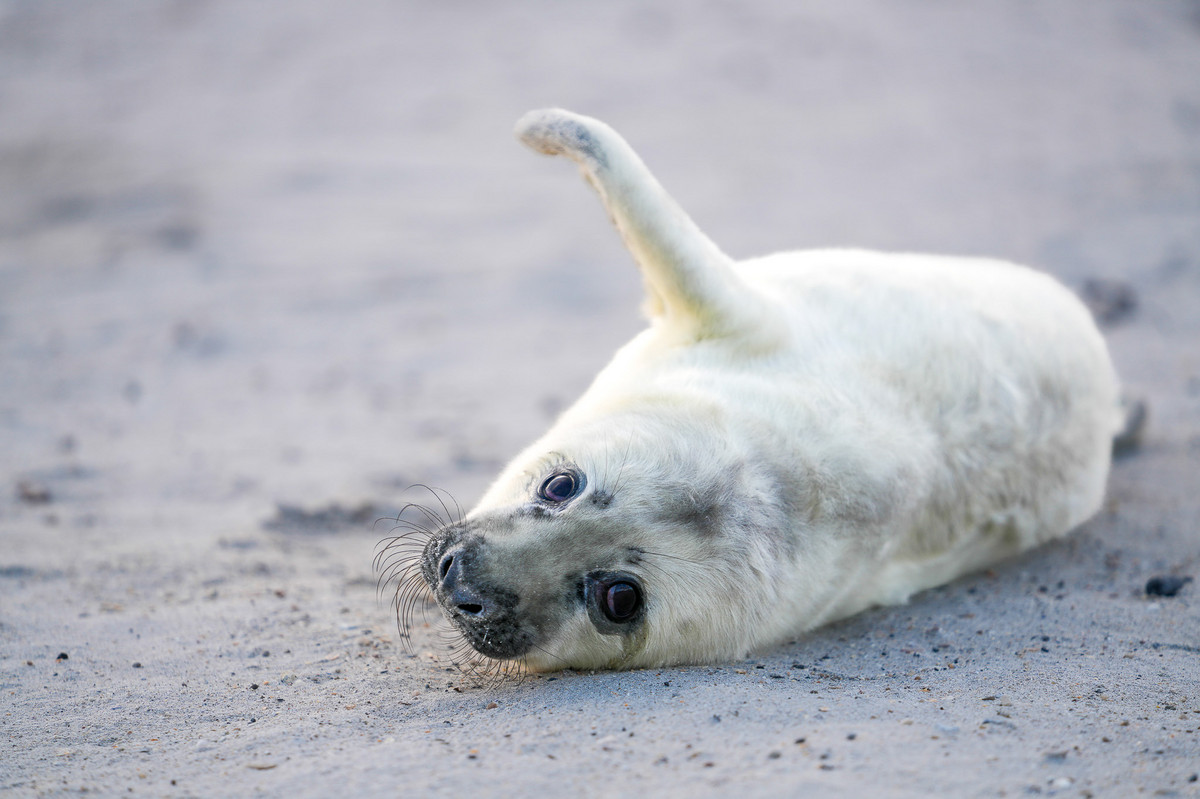
To properly prepare for your trip
Here's how to get there:
By SBB and Nightjet to Hamburg/Cuxhaven and then with MS Helgoland www.cassen-eils.de
Here's how to get around:
On foot; to the Dune by ferry (5 minutes crossing)
How long should I go for:
Recommend staying at least 2-3 nights
Best time to travel:
Summer for swimming and seabird watching / Winter for more tranquility and seal pup spotting
Hotel tip:
https://www.hanseat-nickels-miramar.de/hotel-miramar-helgoland/ Room 31! Attic room with a view of the Dune J
Information on animal observation:
www.jordsand.de
More information:
www.helgoland.de
Realised by Michael Bachmann
Further travel pictures under www.kissed-by-nature.com

